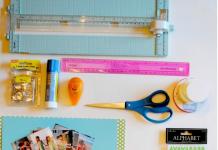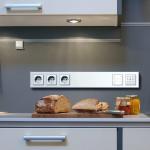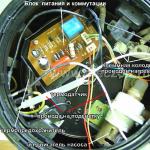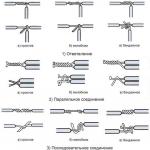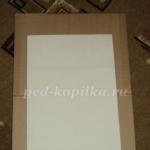You don't have to be an electrician to understand the process of installing sockets and switches. You need to know the simple rules and stages of work formulated in this article.
Important to know before starting work
Security conditions
It is important to do all the work on installing sockets and switches, laying electrical communications only after a complete shutdown of the current in the network. Turn off the machine or traffic jams. And do not connect until the installation work is completed.
Take the indicator and make sure that the outlet or wiring you are going to work with is de-energized. Professionals suggest using two indicators at once. This will ensure that undesirable consequences are avoided.
Points to consider
- You should monitor the condition of the wire insulation, and do not use damaged copies in your work.
- It is strictly forbidden to cut live wires with wire cutters.
- In places where wiring has already been laid, it is impossible to engage in chiselling, drilling or cutting them.
Any touch with a screwdriver with zero and phase wires inevitably provokes a short circuit in the network.
Socket Installation Standards:
- not lower than 20 cm from the floor;
- for every 6-10 sq. m. housing rooms is made one outlet.
Rules for mounting sockets and switches
In order for the installed system to serve for a long time, it is important to choose the right wires and cables to be connected, and lay them properly.
For this, you should take into account:
- The power of all future energy-consuming appliances in an apartment or house. All devices are simply added together. It is necessary to know and what is the maximum power allocated by the network.
- The choice of the type of wire or cable depends on the method of laying them: open or internal. It is necessary to decide which gasket is suitable for a particular electrical installation site.
- When laying wiring, do not lay wires in bundles.
Important! Do-it-yourself installation of an electrical outlet, wiring and further installation of lighting is possible provided that a switchboard has already been installed and configured by a professional (electrician) at the facility or in the apartment. It is not recommended to collect it yourself, without having a special education - it is life-threatening.
Wall outlet installation
What you need:
- socket
- electrical wires (it is worth choosing with a cross section of at least 2 sq. mm.)
- socket box
So, after choosing a place for the outlet and turning off the current, we proceed directly to the installation:
- We place a distance from the floor of 30–100 cm. We mark the installation site with a pencil. We consider the distance from the switchboard to the designated place and determine how many meters of wiring are needed.
- We install a special nozzle for drilling holes in the drill chuck, corresponding to the type of wall and working with electrical fittings.
Tip: when there is no special nozzle, and a single installation of the device is planned, use the following method: according to the marked sketch of the socket (more precisely, the socket), holes are drilled directly on the wall, and the socket is knocked out with a chisel and a hammer.
- Turn on the drill, if necessary, take an extension cord that is suitable in power for the electric drill you are using.
- Put on protection (goggles and, if possible, a respirator) and drill the required hole in the wall.
- Make a groove for the electrical wire. Use a grinder with an appropriate disc or gouge the groove with a chisel and hammer.
- Then the socket box (through which the wiring is pulled out) is installed and fixed in the finished hole.
Tip: measure the wiring with a margin, as the short length complicates the process of connecting to the outlet. And if in the future there is a need to replace the item, then the stock will facilitate the work. Moreover, the wires sometimes burn out and, having a margin, the old ones are simply cut off. Without a stock, replacing an outlet is much more complicated.
- The wire laid in the groove and all the chips and recesses in the socket area are covered with gypsum (alabaster). We wait until complete drying.
The first part of the work has been completed.
Connection
Open the junction box. Then, using the terminal clamps, the electrical wire is connected.
Modern methods of connecting wires using terminals and terminal blocks:
Connection methods using terminals

Important: the thicker the IPZH, the more the cable costs. But don't skimp on wiring. A weak (cheap) wire can burn out, and it will take an impressive amount and a lot of effort to replace it.
- Remove the cover from the outlet. Loosen or unscrew the screws that will clamp the wires. Insert the ends of the wire (after stripping them) and tighten them firmly with screws.
- The screws of the installed legs are loosened and reduced to the body of the socket, which is inserted, and fastened (in the process of tightening the screws) into the socket. The paws, spreading out to the sides, are fixed to the socket and hold the structure in the wall.
- It is recommended to make sure that all wiring is connected.
Turn on the power and test the operation.
Types of sockets and socket boxes and rules for their installation
Along with standard power outlets and switches, new items and variations of these items have appeared on the market, significantly different from their predecessors. But the basic principle of their performance has not changed.
Sockets
Each device consists of:
- contacts;
- bases (pads);
- protective case.
Contact - a key element through which current is transmitted from the cable to the contacts of the connected device.
Three wires are made in sockets: phase, zero and ground. In the old ones there are only two - phase and zero.

Socket block - the base on which the contacts and the protective case are held. When the socket is built-in, there are fasteners on the block for its installation in the socket.
Housing - outer cover with plug holes.
Two types of devices:
- outdoor;
- Internal (in the wall).
The connection process is the same. The only difference is how they are mounted on the wall. For devices for closed wiring, they take a special box where the socket itself is inserted.

Sockets and their installation
These items are divided into two types:
- The first - under the plaster. A hole is drilled either in concrete or brick. In this mounting hole, a socket is installed on plaster, or on alabaster.
- If there is any wall cladding, that is, drywall, or MDF panels, or plastic, and so on, undercuts built-in under the plasterboard are used. The diameter of the drilled holes is 68 mm.
Also, for a certain line of electrical fittings (sockets, switches), special undercuts supplied directly by the manufacturer of fittings are used. For example, the ANAM company - specialized undercuts.
outdoor socket
It is used in the open method of laying electrical wires. Especially when wood trim is used indoors, it is the outdoor unit that is safer. The openness of the wires makes it possible to quickly find possible problems and prevent a fire. The socket itself is simply screwed to the wall.
If mounting on a tree, then:
- be sure to use a special gasket made of paronite between the device and the material;
- then fixing the wiring to the terminals and applying a decorative cover to the base of the device.
Assembly is ready.
Internal socket
The installation process is a little different. For fixing, you need a special box to install the device in it. It is inserted into a hole in the wall and fastened with screws.
When the wall is drywall, then:
- choose special boxes with ears.
Boxes can be metal (old version) and plastic (modern standards). Their diameter may vary. When choosing, consider this point, since modern sockets are most often sold under plastic.
- Unscrew the cover from the socket and install it in the box.
- Fasten the device with screws of the spacer legs.
- Connect wires.
- The design is closed with a decorative overlay.
Important! Fixing the screws should be done diligently. If the contact is weak during use, the socket will heat up.
Then turn on the electricity and check the device.
Replacing the built-in socket
If it is necessary to replace the element, the old socket is first dismantled.
Dismantling

Installation
After completing all the dismantling points, the installation of a new outlet begins.
First action. The wires that were removed earlier are reduced to the required length. It is from 15 to 20 cm. Then one and a half cm are cleared of insulation.

Second act. Wires should be connected to the device.

Third. The wires are bent, the socket box is placed in the workplace and fastened with paws or screws (depending on the model).

Fourth act. The outer frame is put in and the panel is screwed on.

Fifth. After all the steps taken, the electricity supply is turned on to check the operation of the device.
Installation of sockets in any apartment

Power calculation
For example, the apartment has: refrigerator, TV, washing machine and laptop. Their total power is about 3.5 kW. It is planned to add an air conditioning system, an electric stove, a PC, and replace the lighting scheme with a more advanced one. Energy use will rise. In order not to have to change the wiring, you should immediately calculate everything. Wiring data can be viewed in the table:

Bathroom standards
For spaces with high humidity, there are some features in the installation of electrical fittings:
- sockets are not mounted less than half a meter from grounded parts: sinks, pipes, batteries, fittings;
- socket outlets are installed 50-100 cm from the floor;
- “Above the baseboard” devices (in which the nests are closed with a lid after the plugs are pulled out) are mounted no closer than 30 cm from the floor.
Important! In wet rooms, a hidden wiring method is used.
Installation of sockets and switches in a panel house
The panel house has features:
- According to the open method, make the wiring, and accordingly, with such a laying, the sockets stick out from the wall and nothing needs to be drilled.
- Closed wiring. In a panel house (brick too) there is strong concrete and in order to carry out hidden wiring it is necessary to make strobes (preferably with a strobe cutter). For internal wiring, it is important to run the cable in a corrugation so that it is not subject to dynamic changes in the building (if the building sags or leads).
Important! Without corrugations, if it leads the wall, the core can break, which will lead to a short circuit and an inoperative state of the socket and switches.
Laying internal wiring requires wall gating. Electrical cables placed in a corrugated hose are placed in strobes. Then they are placed in the mounting box.
It is important to know! Cables from the corrugation must be led out at least 10-12 cm.
The boxes are fixed with plaster mortar. Then you need to give time to the solution to dry, and continue the process of connecting the electrical fittings.
Installation of sockets and switches

Wiring diagram for socket and switch
With proper installation and with correctly selected cables (if the wiring is already there, done by a professional, and you just decided to mount the outlet yourself), if the electrician did everything right, then:
- A white cable is inserted into the socket on which “L” is written, which corresponds to the concept of phase and power.
- A blue cable is inserted into the socket, which is marked with the letter "N", it is called zero. And, accordingly, if there is a ground loop, then a yellow or yellow-green cable “I_ _” is inserted into the socket with grounding.
To connect a conventional or two-gang switch, you need to assemble the box. White (wire) from it to the letter L. If the box is not twisted correctly, then the colors may not match.
Important! In some rulers, instead of white, brown is a phase. Then you need to do according to the instructions attached when buying.
Colors and Meanings: Blue is always 0. Yellow is ground. It happens instead of yellow black cable.
How to connect the socket switch and the light bulb is indicated in the instructions for these items. Following the electrical circuit, the process is fast. Usually the circuit is supplied with a socket or switch.

Wiring diagram for a two-gang switch with a socket

Wiring diagram for switch socket and light bulb
Installing a double outlet
Installing a double outlet is a little different. The main difference between double sockets and single sockets is the ability to connect two electrical appliances at once. Double are of 2 types: prefabricated and stationary.

Installation of a fixed-type double socket is carried out according to the scheme described above. It is only necessary to connect the cables to different plates. If this condition is not met, there is a possibility of a short circuit when current is applied.
The prefabricated type of double sockets is a little more difficult to install. In addition to the prepared tools, you will need to get a piece of additional wire. Its length must match the one connected to the undercut:
- if the device has 3 wires (one ground and two power), it needs 3 additional ones. The latter should be stretched between the undercuts. The one that has the output of the main wire is connected via a pair of cables to the terminals - from the auxiliary and the main.
In other undercuts, the connection is standard. Installation of a triple socket and block is identical.
Installing a power outlet
The peculiarity of power outlets is that they are almost always installed for an electric stove. They have their own characteristics and nuances:
- such an outlet is connected to a separate line coming from the shield;
- a prerequisite is the ability of the line to withstand a load of at least 40 amperes;
- a distinctive feature of the wiring is a significant thickness;
Power device - able to withstand more powerful loads.

Installing a power outlet is as follows. The socket is attached in the place where the power cable exits. Almost always it is near the place of the stove. Fastening takes place in all holes with dowels. The protection of the socket must be at least IP20. Insulation and connection is performed by twisting and soldering. For proper connection, you should pay enough attention to colors. This will allow you to connect ground, zero and phase without errors.

Related videos
- Way of connecting sockets
- The importance of the PE contact of the wire in the socket
- Tools and consumables
- Preparing to install outlets
- The nuances of mounting outlets in drywall
- Block installation of sockets in a concrete, brick wall
- Connecting sockets
An increasing number of connected household electrical appliances require the installation of a block with several sockets side by side. It is always necessary to calculate their number, based on the presence of connected household appliances.
It is highly undesirable to operate extension cords and tees on an ongoing basis, due to an excess of plugs. It is unacceptable that a part of the household electrical wiring that feeds permanently installed electrical appliances is lying on the floor.
Way of connecting sockets
Having decided on the choice of the required number of outlets, you need to decide whether it will be a serial connection of outlets (loop) or parallel (star).

Serial connection (loop)
When choosing the latter, it is necessary to additionally install a junction box nearby, and from the common tires L, N, PE installed in it, lead separate wires into each outlet.

Parallel connection (star)
Sometimes, instead of such a box, an in-depth socket box is additionally used, and the wiring is carried out in it, and instead of the socket, a plug is installed that does not spoil the design. Additional depth of socket boxes is not required when connecting sockets with a loop using jumpers installed in pairs in each terminal clamp.

recessed socket for soldering wires in it
But there are requirements of the PUE regarding an important element of the network - the protective conductor PE: the connections of this wire must be non-separable without the use of a special tool.
The importance of the PE contact of the wire in the socket
When connecting sockets, many underestimate the importance of the quality of the installation of this conductor, in which the presence of a break can attract attention in the event of a dangerous electric shock incident.

If, due to a poor-quality connection, contact with the ground is lost somewhere in the middle of the circuit, and the mains voltage hits the housing due to a malfunction, for example, an iron, the housings of all electrical appliances plugged into the socket are energized, between which the PE wire contacts.
The consequences of a malfunction in the ground wire can be very deplorable, you should not treat it with disdain. The only way to achieve reliability without additional controls is maximum attention and effort to installation. Since it is not allowed to insert two PE wires under one bolt, connecting all sockets with a cable, you need to choose sockets that have two fasteners for this wire.

The method of connecting wires with a "loop"
Tools and consumables
Assume that the wiring has already been done, and no additional tools are required to make the groove. For high-quality installation and reliable connection of sockets, you will need:
- water level, ruler, tape measure;
- perforator drill with a drill bit, chisel, drills;
- electrical tool kit.

To fix the socket boxes in a brick or concrete wall, you will need spatulas, containers and a mixer for mixing the gypsum mortar.
All materials should be selected based on their quality and reliability - after all, electrical safety should be a priority in this matter.
- Sockets, their choice should be based on the quality and the possibility of a separate connection of PE conductors;
- decorative strip common to all sockets of the required length;
- cable for wiring, wires for jumpers;
- special socket boxes connected into blocks for the type of wall in which they will be installed;
- alabaster or gypsum for fixing in the wall of socket boxes;
- floor covering.
Preparing to install outlets
First you need to start assembling the socket block. There are various designs, with adapters that snap into special grooves, or with non-removable transitions - in this case, the socket for the extreme outlet should be without this protrusion.
Having laid a protective coating, providing enough free space for work, you can proceed. Using a pencil and a ruler, mark the place where the sockets will be installed.

You always need to make sure that there are no various communications under the wall. Regarding drywall, it is also important not to get on the profile that supports it. Using a level, draw a horizontal line at the desired height, and cross lines indicate the centers of future holes at a distance of 72mm.
At the point of the future center, a recess is made with a center punch so that the guide drill of the drill bit does not lead to the side.
The nuances of mounting outlets in drywall
It must be remembered that when drilling drywall, you can not press hard so as not to break it. Mounting boxes for drywall have special paws that are pressed against the back surface of the plate, tightening the glass hole.
Along the edge there is a rim that will not allow the socket to fall inward. Therefore, at the drilling stage, you need to make sure that the circle is neat. To install the socket, the gap between the wall and the drywall slab must be sufficient for the depth of the socket. Otherwise, the wall is deepened.
Block installation of sockets in a concrete, brick wall
Drilling starts at low speed, controlling the position of the drill.

To ensure greater accuracy, first drill a hole with a small diameter drill, and then use a crown that will make a recess exactly in the marked place. Having drilled to a sufficient depth, the wall material remaining in the holes is chipped off using a manual or perforating chisel.

Then, between the holes, a groove of suitable sizes is punched for the connecting protrusions of the socket boxes and this recess is cleaned with a brush

They try the position of the block of sockets in the recesses made - they should not rest anywhere and protrude above the wall surface, after which the surface of the recess is primed.

We connect the sockets to each other and fit them into the prepared recess
Since no more than two wires can be connected to each terminal of the socket, the input cable for connecting the sockets is threaded into the outermost socket so as not to create long jumpers.

To fix the socket boxes in the wall or masonry, you need to dilute the cementing mixture in accordance with the instructions. It must be remembered that these solutions seize very quickly, and you need to act quickly until the mixture has hardened. Using a spatula, coat the outer surfaces of the glasses with a solution and insert the entire block into the holes.

Until the gypsum has hardened, using a level, check the location of the sockets, adjust so that there is a parallel position relative to the floor, and also, using a plank, press the block of sockets into the wall, preventing the edges from protruding. Subsequently, a layer of mortar is applied over the boxes and smoothed down to achieve a smooth surface.
 While the solution hardens, prepare multi-colored wires for jumpers between sockets, biting off the required length and stripping the insulation by about a centimeter. Having previously cleaned the cavities of the socket boxes from the gypsum frozen there, they thread the wires through the adapters. The protruding ends of the wires should be equal to or slightly larger than the diameter of the socket for easy connection.
While the solution hardens, prepare multi-colored wires for jumpers between sockets, biting off the required length and stripping the insulation by about a centimeter. Having previously cleaned the cavities of the socket boxes from the gypsum frozen there, they thread the wires through the adapters. The protruding ends of the wires should be equal to or slightly larger than the diameter of the socket for easy connection.

Connecting sockets
In order for the wire strands to reliably fall into their intended place in the mounting sockets, the clamp bolts must be unscrewed as much as possible. For more convenient installation, bend the ends of the conductors under the location of the terminals.

Checking the level of the location of the sockets
Tighten the bolts very carefully, each time checking the fastening of the wire. Having connected the first outlet, it is immediately installed in place and fixed with self-tapping screws, but not fully tightened. Repeat this process for all sockets, and align them with a level. Some products have hooks that help in proper positioning, it is better to choose these.

Insert decorative inserts
After that, all self-tapping screws are pressed. The installation is completed by fixing decorative inserts and a common plank.

common plate mount
For many owners of houses and apartments, installing and connecting sockets seems to be something complicated, which simply must be done exclusively by a master. In truth, this is not the case, and therefore this article will tell you how to make a do-it-yourself installation of an outlet block.
What you need to know before you get started
Nowadays, there are a huge variety of materials from which a wall can be made. There are plasterboard walls, stone walls, brick walls, concrete walls. Different installation technologies are used for them, since each of them has its own specifics.

Note
This article only describes how to install and connect the socket block, despite the fact that today we also have such a combination as a socket with a switch, but an article will be published about it some other time.

To install sockets, you need to know the dimensions of the socket blocks, and they are as follows:
- The size of one outlet is 72 millimeters wide and the same in height;
- The block size grid of 2 electrical points is 72 mm long and 142 mm wide;
- The block size grid of 3 electrical points is also 72 mm long and 212 mm wide;
- The grid of 4 parts is 284 mm wide and 72 mm high.
Safety during socket installation
The process of installing and connecting the outlet must be safe and fairly aesthetic. Let's talk about the first, professionals recommend installing sockets at a height of about forty centimeters from the floor, although most people install them at a height of about a meter.

Children should not have any access to sockets, so it is worth installing sockets with a protective cover that a small child will certainly not be able to break into.

detailed instructions
In order to simplify this work as much as possible, this article contains step-by-step instructions for mounting the socket block.
Prepare for installation
Before you start work, it is worth determining the place where you will place the outlet group. If this place is the kitchen, then the outlet should be placed just above the countertop, thereby ensuring that the cord from any kitchen equipment will successfully reach the outlet.

In case you plan to place sockets in the living room, it is best to do this behind the TV, which will hide all the wires.

Speaking about the bathroom, it must be taken into account that the sockets must be located at least 0.6 meters from the bathroom and be waterproof.

Wall marking process
A crucial stage that determines the quality of the installation of sockets and their connection. In order to implement it, it is necessary to lay sockets on the place where the sockets are installed, the number of sockets laid on depends on how many sockets will be present in the block.

When doing this work, be aware that there should be exactly 72 centimeters between the central parts of the sockets. By making a mistake in measurements, you guarantee yourself that the outlet cover will not fit.

Gating
This process is not as difficult as it sounds. It includes the creation of sockets for socket boxes. In this case, you need to have a puncher with the right nozzle.

If you are going to place the socket block in a concrete or brick wall, then it is vital for you to gouge the circles with a crown, and then knock out the core with a chisel.
Installation of socket boxes
It is also not the most difficult step in installing sockets, since today the market offers plastic cups created for this procedure that connect to each other. So even the most recent layman can handle it.
If the installation of socket boxes takes place in a concrete or brick building, then you need to cover the glasses with a plaster solution.

If you are dealing with drywall, then know that the implementation of the above procedure at sub-sockets is simple, since they have paws created for this, which are pressed against the sheet on the sides.


Electrical connection
After waiting for the substance to harden, you need to start turning on the indoor socket block to the 220V network. Several euro sockets can be connected to one electrical wiring line at once, but keep in mind that this is only done when you know that you will not connect, say, an electric stove.

And now to the point, to install and connect the socket blocks, you need to bring the lead wires coming from the junction box into the very first socket box: phase, zero and ground. Next, in order to connect other outlets, make jumpers.

Note
The above procedure is carried out with the electricity turned off in the apartment or house.

Having completed the work on connecting all the cores and terminals, you can install the socket covers yourself and compare the externally obtained result with the photo of the socket blocks below.

















Electrical appliances are taking up more and more space in the home. Smartphones, tablets, computers and TVs are in almost every home. To use all these devices, single or dual power points are not enough. As a rule, with modern wiring, a socket block consisting of several connectors is connected.
What is a socket assembly
This is a design consisting of several connection points, often with different purposes. For example, a socket block may consist of a pair of electrical (220 V), one television and one computer network or USB connector, through which you can connect to the Internet, as well as to connect to other computing facilities. The composition of the assembly may also contain telephone sockets, which are quite common in modern offices. Installation of a block consisting of several socket devices is carried out in one of 3 ways:
- by embedding in the wall;
- external way;
- using portable modules - such as multi-socket extension cords or retractable structures.
Designs can be supplemented with various kinds of devices: fuses, indicators, plug ejectors, automatic devices.
How is interior installation done?
With this type of installation, the installation of the socket block is carried out directly inside a brick, reinforced concrete or block wall. For this, special boxes are used - socket boxes, to which electrical, television and other cables are connected. In most cases, each power point has its own socket. This is mandatory for plug-in devices with different purposes.
If, for example, an assembly has two electrical connectors, one box can be used for them. There are combinations of power outlets with light switches. It is advisable to implement such a solution where rooms have limited space - for example, in bathrooms.
Surface mounting and its features
This installation option is preferred when the wiring is outside the walls and enclosed inside the ducts. In this case, the installation of a block of socket devices has its own characteristics.
- Socket boxes are not required here. External sockets are mounted directly on the wall surface.
- If the block has a connector for connecting a television receiver or a computer network, then it will not work to combine power sockets with them in a single assembly. Such designs will have to be supplemented with single television or computer connectors.
- With surface mounting, it is much easier to replace the socket block than with an internal one. The wiring does not have to be brought inside the new socket.
Retractable structures
Such retractable devices are usually built into furniture and are often used in the kitchen. When power is not required, they hide in the countertop and do not interfere with cooking. If you need to connect a food processor, a TV device or some other gadget, this design is put forward by pressing a button or in another way.
The convenience of such solutions is that they have an aesthetic appearance, can be installed in a limited space and do not require the destruction of walls by the formation of holes. In addition to retractable, there are also rotary designs.
What is the socket block made of?
The block of electrical power sockets built into the wall consists of the following parts:
- front panels;
- one common frame for the entire structure;
- housings with grounding, phase and neutral contacts;
- socket boxes - one or more.
As a rule, such structures are installed at a height of 300 mm from the floor - this is the most practical distance. You can do it higher - for example, 90 cm from the floor, as was done in Soviet times. This distance is convenient for switches. At least there are no hard and fast rules in this regard.
Each room must have its own machine. An exception may be the bathroom and kitchen, where several machines are sometimes used. If there are small children in the apartment, it is necessary to provide additional security measures - to provide devices with protective shutters.
For installation of electrical wiring, a 2 or 3-core wire with a cross section of 2.5 mm is used. It is advisable to use copper as it has a much better electrical conductivity than aluminum, although such wires are more expensive.

Installation details
How to install a socket block indoors? The first thing you need to decide is the place of installation of the modular design. It should be located as close as possible to the electrical devices used, so that it is convenient to connect them. For example, in the kitchen, the optimal place for the socket block is above the countertop, so that it is convenient to turn on the food processor, mixer, electric meat grinder and other household appliances. The number of power points depends on how many devices will be used at the same time, they are also determined with the presence of a TV connector.
If the socket group is installed in the bathroom, it should be remembered that its distance from the water must be at least 60 cm. In addition, the housings of the electrical sockets must be protected from moisture to prevent short circuits.
When you have decided on the place, you need to prepare a perforator with which the walls will be ditched. It depends on the material of the walls - brick, concrete, drywall - which nozzle will need to be used. Tools such as a level, tape measure, and marker will also come in handy. Next, the walls are marked, for which a marker is used. The location of the sockets is applied. The distance between their centers must be exactly 72 mm, otherwise the frame may not fit on the front panels. If the devices will be installed not as a block, but as a set of separate connectors, then this condition is not necessary.
Before connecting the socket block, the walls are ditched for electrical wiring. In order for it to pass strictly horizontally or vertically, a building level is used. In order to make recesses in brick or concrete walls, you first need to cut through the sockets with a crown. The holes are then knocked out using a chisel and hammer. Installing a socket block in drywall is even easier.
When the holes are ready, rosette glasses are inserted into them and fixed there with a gypsum solution. Glasses are attached to drywall using special paws located on the sides.

Electrical connection
When the gypsum mortar dries and the installation of the socket block is completed, you can proceed to the final stage. How to connect the socket block to the electrical network? There are two methods for this - loop and combined (parallel).
In a daisy chain, connectors are connected in series from one incoming cable. This option is convenient and most common. It is implemented if powerful appliances are not connected to the sockets - for example, a washing machine, boiler, oven and others. With this connection, less cable is consumed. All points are connected in series with jumpers from the cores, which are taken from the same cable that is laid.
It should be noted that the current Electrical Installation Rules (PUE) prohibit breaking the neutral and ground wires. Unfortunately, they don’t pay much attention to this and install sockets everywhere in this way.
In the event that it is supposed to connect something powerful, you can use the combined method. From the shield with the machine, two wires are laid in the corrugation. One is connected to a powerful connector, the other is used to connect the remaining points in series.
Each of the laid cables must pass through itself up to 16 Amps of current without strong heating. If the socket block includes a low-current television or computer cable, a separate strobe is made under it, it is also supplied in its own corrugation.
Another type of connection is practiced - a star or a branch. This is done when some powerful consuming device can be connected to each of the points. A separate cable goes to each connector from the shield. If there is grounding, you will have to pull 3 wires. For a three-phase network of modern TN-C-S and TN-S standards, 5 cores will need to be laid. This method is the most costly in terms of the amount of cable used and in terms of labor, because each cable must be separately ditched.
All cables are laid with a small margin, so that in the future, when replacing sockets, you can easily reconnect them. After the cables are connected to the internal contacts, the sockets are fixed inside the sockets, the front panels are screwed on and the frame is put on.
What is an outlet block? This is a solid panel with several "electric points" - sockets. As a rule, such a panel is installed in the kitchen, in the study, or in the living room - where a large number of household appliances are located.
It is especially convenient to use the socket block in those conditions where it is necessary to simultaneously connect several electrical appliances interacting with each other, for example, a personal computer, monitor, audio system, and so on.
The purpose of this article is to describe as concisely as possible about how to install and connect the socket block with your own hands. The only nuance that is worth mentioning right away is possible - the technology for mounting sockets may vary. It all depends on what specific material the walls in your house are made of: drywall, wood or artificial stone (brick / concrete).
Somewhere things are easier and it will be enough to install the overhead block of sockets, somewhere you will have to ditch the concrete. Let's try to briefly go through each of the installation options, along the way, drawing up a general picture that demonstrates the front of the upcoming work.
Step by step installation instructions
In order to make the installation process of the socket block look clearer and more accessible, we will break it down into a few simple steps:
Preparation
You should start by choosing the most suitable place for placing a group of outlets. And even better - from the room in which the socket block is planned to be installed.
Let's say this is the kitchen. Then it is most convenient to put sockets above the countertop - and the multicooker will get it, and the microwave, and the kettle will be where to connect. At the same time, the wires will not interfere with the hostess at all, getting underfoot. Everything will look as attractive and appropriate as possible.
The socket block is very convenient, wherever it is located
If the sockets are installed in the living room, it would be more logical to mount the unit behind the TV - and all video equipment will “reach” electricity, and the sockets themselves will be “hidden” behind the screen plane.
In the bathroom, there may be additional nuances. The main one is the distance from sockets to water (bathroom, sinks, etc.). It should be at least 60 centimeters (we previously talked about). The body of the socket block itself must be waterproof.
In addition to directly planning the location of the outlets, at this stage you need to prepare the tools that will be needed for further wall chasing. A wall made of artificial stone (brick or concrete), like a plasterboard wall, requires a puncher. The difference lies only in the nozzles that are useful for drilling certain surfaces. In addition to the puncher, you will need: a building level, a tape measure and a marker for marking.
We perform markup
Wall marking is one of the most important parts of the process. It depends on her how correctly the connection will be made. To begin with, we determine how many outlets there will be in one block. The distance from the center of one socket to another is 72 millimeters and the error here is highly undesirable.
It is also worth carefully monitoring that the strobes are strictly in the same plane. The construction level will help to cope with the task. Are the walls marked? Alright, let's move on to shading.
strobes
To create them, you need to make seats for plug-in sockets. In general, this is a fairly easy and straightforward process. All you need is a puncher and a suitable nozzle. If the block is planned to be placed in a brick or concrete wall, you first need to punch the circles with a puncher with a crown, and then knock out the middle with a hammer and chisel.
We install socket boxes
First, we fasten them together or immediately take a block, after which we fix them with a gypsum mortar in the wall (if it is concrete or brick), or we cling to the wall with the help of special fasteners, paws, if it is made of drywall.
Time to turn on the electricity
After installing the sockets, we expect the gypsum mixture to solidify, or we proceed directly to connecting the sockets (in the case of installation in a plasterboard wall). As you know, sockets are connected to a network with a voltage of 220 V. It is not difficult to do this yourself. Compliance with safety precautions and following clear instructions is all that is required of you.
Often, all sockets are connected in series - with a loop. One cable is connected to one of the interconnected electrical points, leading to the general electrical network of the house. If you do not plan to simultaneously turn on powerful equipment connected to one socket block, then such a scheme for connecting electricians to sockets is quite acceptable.
First you need to turn off the power supply to the house (or apartment). This can be done using a toggle switch on the apartment panel or simply by turning off the meter plugs in a private house. Further from the wires are drawn to one of the sockets (zero, phase and ground). After you need to make jumpers in order to connect the remaining several outlets to electricity.
When all of the above steps are completed and performed correctly, all the wires are connected to the corresponding terminals of the sockets, you can proceed to the final touch - put the cases. After installing the cases of euro sockets, it remains only to close everything with a decorative cover.
Voila, it's done!
Outcome
So, it’s absolutely not difficult to connect the socket block yourself! In principle, there is no need for any special skills or any special tools. You do not even need experience in installation work related to electricity. The main thing is to be careful (especially at the stage of connecting sockets to the mains) and strictly adhere to safety precautions.


